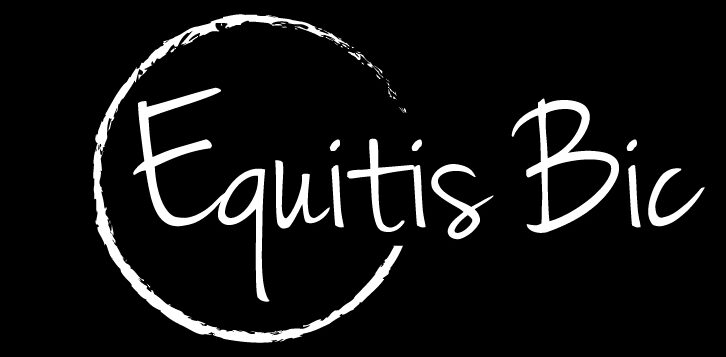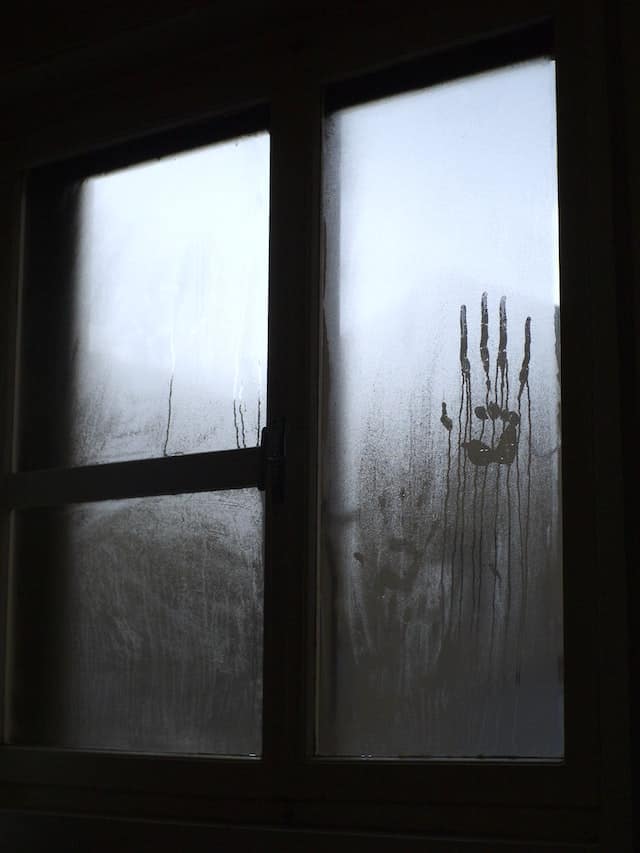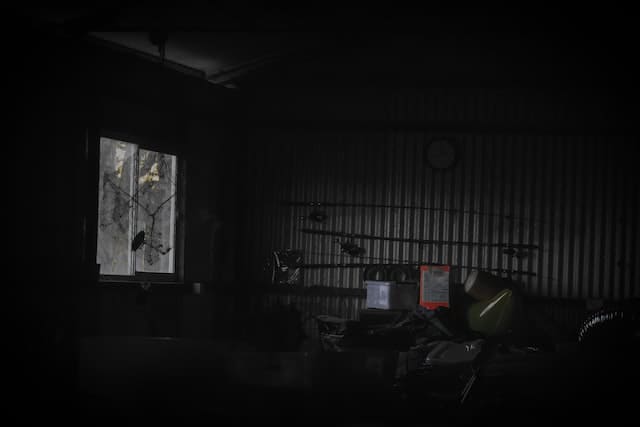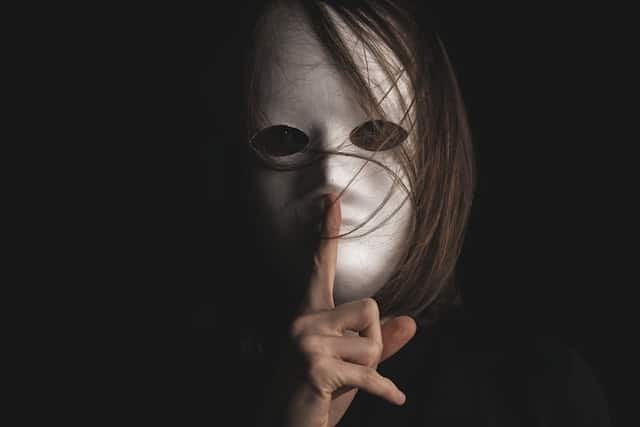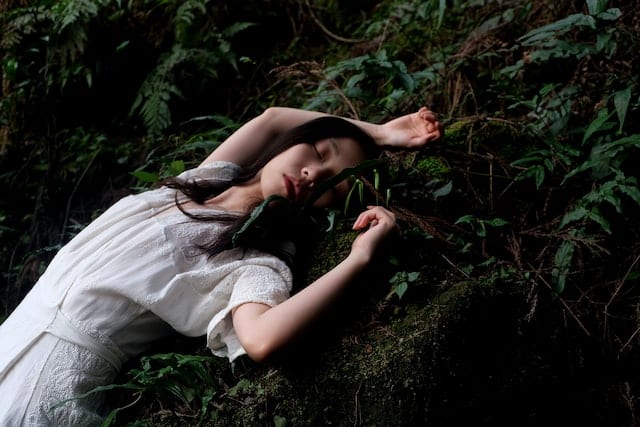What Causes Sleep Paralysis
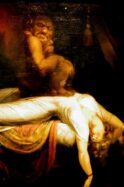
Sleep paralysis is as sinister and as old as time itself. Its crippling connection to nightmares and night terrors can be traced through texts of the ancients as well as the advancements of modern neuroscience. Surprisingly, the answer to what causes sleep paralysis can be found in the one and the other.
Sleep scientists have discovered a process in the mid brain in which spinal motor neurons are inhibited which cause a loss of physical movement during REM sleep. This is the physical cause of sleep paralysis. As for the evil spirited ghosts that appear at bedside… this is the result of the exploitive nature of fear and evil.
It can be a bit naive to think of a topic like this as either/or. Either sleep scientists are right or those who insist they were visited by ghastly demons are right. I’ve taken a deep dive into this topic with an open mind and found there’s credibility for each. It’s a both/and situation.
The Science Behind Sleep Paralysis
There are many neuroscientific reasons our physical body experience paralysis during REM sleep. I won’t bore you with the technical aspects. The reason paralysis takes hold of your body when they sleep is to protect you from acting out what you dream. In other words you go into ‘safe mode’ when you sleep. There’s no scientific reason or explanation for why fear takes hold or the presence of apparitions. These aspects of sleep paralysis are summarily dismissed as hallucinations.
Neuroscientists have made astounding advancements in sleep science in recent years. As I understand it, they’re working on a dream recording device they hope will show dreams as they’re experienced. The implications of this are astounding at the very least, suggesting movies can be made out of dream experiences.
But on the cusp of these advancements the facts remains neuroscientists are only scratching the surface of understanding the brain and its relationship to dreams. To fully understand what’s going on with sleep paralysis it’s necessary to consider the extraordinary experiences dreamers have as more than mere hallucinations.
The Fear is not Human
Fear drives this phenomenon of sleep paralysis and gives it the power to terrify. If you take a moment to think through the mechanics of sleep paralysis you’ll soon realize there’s really nothing terrifying about lying in bed and not being able to move for a few seconds. Yes, this inability to move is startling and catches you off guard, but what’s so scary about that?
Truth is, a dreamer will often be startled out of a nightmare and then experience sleep paralysis. I can’t count the number of times dreamers recounted a nightmare to me and then followed it up with “I woke up in sleep paralysis.” They were terrified in their nightmare first, and the same terror followed them out of the nightmare and into sleep paralysis.
A dreamer recently told me a nightmare resulting in paralysis. He found himself in an unfamiliar dark place. He saw an old gothic mansion in the background and stumbled upon a coffin. He reached out and touched the coffin and immediately awoke to sleep paralysis. When I asked him how scared he was on a scale of 1 to 10 he said it was about an 8. He also said the fear came at him from inside the nightmare, as if it was an assault.
This got me thinking. When we humans get naturally afraid of something such as unexpectedly encountering a grizzly bear out in the wild, the fear rises up from within, as all human fear does. Why then didn’t this dreamer’s fear rise up from within him but came at him like an assault from the outside? The only logical answer for this is the fear that assaulted him in the nightmare and his paralysis wasn’t run of the mill human fear. It was supercharged fear from somewhere else.
I’ve made a habit of going out in public and asking strangers about their experience in dreams. I was astonished at how the great majority of those I spoke with had nightmare experiences. They didn’t all have a sleep paralysis experience, but it stirred my curiosity as to the origin of the word nightmare. So I consulted a behemoth of an old dictionary I found at Goodwill a few years earlier.
Here’s what I found:
night’mare – n [ME, nihtmare; nist and mare, demon from AS. mara, incubus, nightmare]formerly, an evil spirit that was believed to haunt, and suffocate sleeping people.
I was astounded by that first definition. It described the experience of sleep paralysis perfectly, and explained what all these dreamers I encountered were suffering from. Finally, a definition that made sense and discount these dreamers as victims of hallucinations. They were having common experiences that felt so real because they were feeling the physical effects of evil entities inflicting torture.
It wasn’t too long afterward when I had one of my most memorable experience of sleep paralysis.
I was in a small, square penthouse apartment similar to a place I used to live twenty years ago. It was dark but I was able to make out a shadow or two in the room. So I was lying in this bed and suddenly I felt my body do this strange contortion. I was arched backward stomach up, both hands and feet flat on the bed. Fear had such a tight grip on my that I didn’t have control of my body. While looking across the room and saw a friend sleeping a few feet away and tried to call out for help. When my friend finally awoke he quickly pinned me down. Then I woke up.
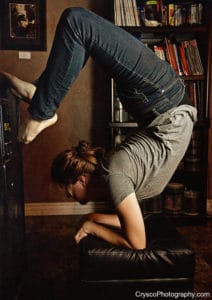
That was my experience of fear following me into waking life. As took a closer look at sleep paralysis the last few years, I’ve come to recognize there’s more going on than meets the eye. The nightmare, so alive in sleep, attaches itself to you and searches for a way to become part of your actual life! The paralysis may last a few terrifying seconds or minutes, but is actually happening. I experienced a living nightmare.
I Had a Living Nightmare
I woke up rehearsing my dream. This is a trick I learned to help me remember more of what happened during sleep. As I was reviewing the setting in my mind, I realized that the level of darkness in the dream was equal to the darkness in my predawn bedroom. Presence accompanied the darkness. It was as if a living entity was now in my bedroom. An entity that felt as real, even more real than anything or anyone in my waking life.
We’re told by those who claim to know dreams that the origin of what we dream Is our subconscious mind. Dreams and nightmares, they say, pull images of what we’ve seen within the subconscious mind. On the surface this seems to to be the answer. But how exactly did living darkness leave my mind where it supposedly originated and enter my bedroom? Dream experts don’t seem to have an answer for that one.
I know for a fact that kind of murderous darkness doesn’t dwell in my mind because I invited the Light of the World into my dreams. If I have a nightmare like I described above it’s only because its been allowed to go through the Light to get to me. Darkness, no matter how murderously evil, bows its knee to the Light.
If that kind of darkness doesn’t dwell within my mind, the only other place it could originate is outside of me. I’ve found the same to be true in my conversations with hundreds of dreamers about thousands of dreams. The origin of nightmares that cause sleep paralysis is almost always outside of the dreamer.
How Does All of this Affect Sleep Paralysis?
How then, does sleep paralysis fit into it all? Simply put, when you have dreams where you can’t move you’re having an encounter with spiritual darkness. A demon from the dictionary definition. In unveiling of my sleep paralysis, I’ve found living entities that fashioned this dark weapon against me. They do this to terrify dreamers and cause them to ignore their dreams. Even flee from their dreams and make them not want to have any more dreams. Its purpose is to bridge the destruction of the nightmare to their waking life. Dreamers who are driven from their dreams by fear don’t discover life changing treasure. This is why they do their best to remain hidden.
Until now.
What are your experiences with sleep paralysis? Share in the comments below.
EB
